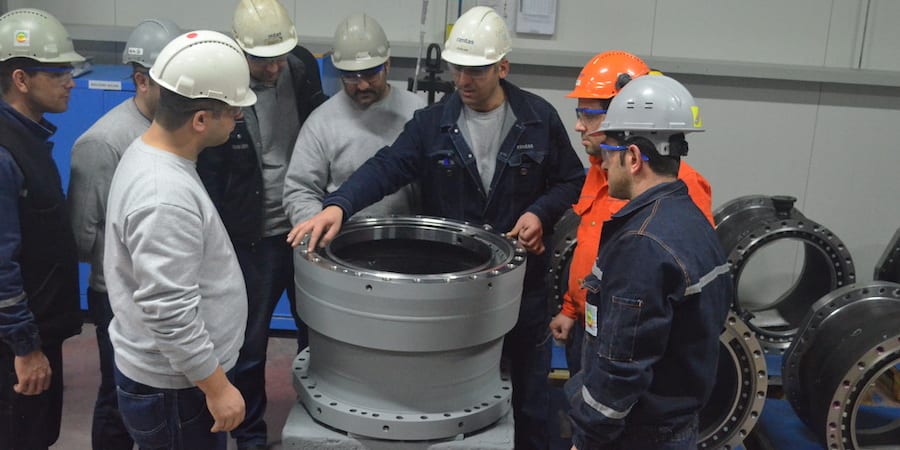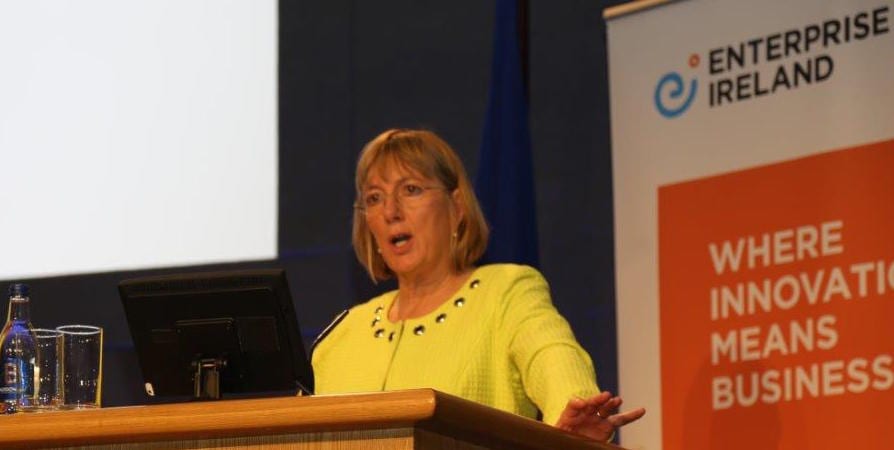
How lean is enabling the growth of a Turkish company
CASE STUDY – With plans to double capacity year on year in its new precision machining business, a Turkish company found in lean a way to control growth by stabilizing old processes while new ones are introduced.
Words: Baran Burat, General Manager, Çimtaş Precision Machining
At Çimtaş, we are all very much aware of the power of sustained improvements in ensuring our competitiveness. We have been at it for a while, in fact – since the 1990s.
Our initial efforts – supported by the visionary leadership of our former CEO Vedat Mimaroğlu first and of Cem Geyik, Vice President of the Çimtas Group, today – included the deployment of improvement tools like quality circles, gemba kaizens, basic problem solving techniques, and six sigma. It wasn’t until 2009 that lean thinking and practice became part of our company’s strategy to create value for customers, engage and develop people, and improve our processes.
Today, we can proudly say that lean permeates the culture of Çimtas’ many businesses – Çimtaş Gemlik Works, Çimtaş Module and Shipyard (Planet Lean published a case study on them, here), Çimtaş Ningbo (in China), Çimtaş Spool/Pipe/Fitting Works, and Çimtaş Precision Machining – from the security personnel at the entrance gates all the way up to top management.
With its 44 years of experience, our group provides customers in the construction, power, oil & gas and chemical industries with engineering, procurement, welded fabrication, machining, modularization, erection and installation services. We engineer and manufacture a wide range of products, from steel bridges to heat recovery steam generators, from combustion casings to pipe fitting components. As of 2015, we had shipped a total of 1 million tons of products.
In 2012, in a bid to capitalize on our knowledge and experience in the field and create a major long-term differentiator for our business, we founded Cimtas Precision Machining Industries and Trading. Our ability to build close tolerance parts – we have gone from millimeters to micrometers – with repeatable accuracy for demanding construction projects (from wind towers to bridges) is one of our competitive advantages.
The big investment we made in precision machining, however, risked being thwarted by our physical constraints: we had very limited space available in our plant, in the face of an ambitious growth plan that aimed to double our capacity year on year, while continuously increasing the number of product lines. Making this happen quickly became a priority for us as a business.
And it only made sense that a Cimtas priority would be dealt with using lean thinking. Critically, the lean model we put in place has given us the opportunity to control our growth, by allowing us to keep the production going – to meet customer demand and requirements – while new products (and production lines), technology and processes were being introduced. To grow our portfolio we invested in new buildings, machinery and technology, while increasing the size of our site. Indeed, thinking lean made us flexible, encouraged our people to work in teams, and boosted our quality performance – which in turn resulted in higher customer satisfaction.
Our ability to effectively align the work of the process engineering team, the construction team and the equipment supplier through lean project management has proved key to achieving sustainable growth. It meant that process parameters were defined at the equipment supplier’s site prior to shipment, so that our own site would be ready to install the equipment right after it arrived: this greatly minimized any wastes of time and allowed us to “fast-track” the introduction of new products – something our competitors could not do.

ASSESSING THE GAP
Our transition from a project-focused heavy industrial manufacturer to a serial producer of complex precision components – which took place at the end of 2012, when Precision Machining became a separate entity – required the review and reorganization of our way of thinking.
To truly understand the gap between where we were and where we wanted to be, and to set our targets, we used a Lean Assessment Chart – a great tool to “take a picture” of the company’s maturity level and, therefore, have the proper information to plan ahead and define next steps and priorities. The Chart offers guidance to all the team members on what they need to focus on, so that resources can be used effectively. (We now use it yearly to analyze performance and identify the improvements needed for the future.)

The targets we were able to identify deploying this tool – which we felt would support our accelerated growth – were identified as: customer focus, lean organization, lean manufacturing, leadership and communication.
The safety of our employees, based on a “Zero Accident Policy”, is our priority, but without the standardization of the workplace, this would have been impossible to tackle. That’s why we introduced 5S to make problems more visible at the gemba, as well as a number of visual management tools. Several rapid improvements motivated our people to get on board with the standardization of the work, but what really won them over was the fact that they felt empowered to make suggestions and changes – a necessary step in any lean transformation.
Another important milestone in our lean journey was the decision to restructure our Operations Department, breaking our large functional teams into smaller teams that could drive performance against SQDC targets in a more autonomous and agile way. We also implemented a system of tiered leadership tasked with sharing the success of their teams on a monthly basis and helping our operators close any gaps that may arise. The various leadership teams have taken on this responsibility with enthusiasm, always offering honest feedback and regularly celebrating success with the teams at the gemba. Our VP, Mr Cem Geyik, can often be seen at the gemba, too.
But involving people and asking them to share suggestions – while a vital contribution to our transformation – is not enough in itself: we also needed to turn our employees into problem solvers. This meant providing them with the right tools and helping them become autonomous in finding, measuring, and solving problems through practice (which, as we all know, makes you perfect). Offering people training (provided by Lean Institute Turkey, which has been of great help throughout our transformation), but more importantly getting them involved in the lean work on the ground – from 5S to value stream maps and kaizen events – has gone a long way helping Cimtas equip itself for the challenges it faces as part of its growth plan.

DAILY BUSINESS VS. NEW PRODUCT INTRODUCTION

We have had to work hard to strike the right balance between ensuring that business-as-usual remained a reality and expanding our portfolio with new product introductions. It would have been easy for us to neglect the daily running of the business in favor of the promise of future success that comes with new products and technologies.
What we did to ensure we had a balanced approach was separating very clearly the daily problem solving, quality improvements, and waste reduction from our growth-related activities. The strongest tool we had in our hands to take care of the every-day work was, without a doubt, the daily asakai meeting. This is incredibly important to us, because it gives us the chance to keep track of our performance on a continuous basis and to react to problems or deviations as soon as they occur. Our approach focused on never interrupting the flow of the work, not even in the face of a tough problem that has no immediate solution: in these cases, a temporary solution is implemented, before the team can come up with a long-term fix. Show must go on, right?
For more strategic issues related to our growth plan, we found our obeya room to be the place to be. It’s been a resounding success, and has completely reshaped our way of working and communicating, both visually and during face-to-face interactions. Thanks to the obeya, everyone has become aware of the work flow, obstacles, solutions and schedules, which was particularly important whenever we introduced a new product. More importantly, the “war room” has allowed us to learn together with each and every one of our team members.
All the internal lean platform that we have been using to get our people together – from asakai meetings to the obeya room, from kaizen and quality at the source meetings to problem solving sessions – have been invaluable in sustaining mutual learning and developing flexibility for the organization as a whole. In the same way, visual management has been a game changer for us.
We have learned both to see the whole and to dive deep into details whenever necessary. More importantly, we have learned to learn – without this, growing and sustaining growth would be a fool’s errand.
We are confident in our ability to grow sustainably now, because we know we have managed to successfully initiate a transition towards becoming a learning organization that has strong leadership, cares for its people and provides the best possible service to its customers.
THE AUTHOR

Read more


FEATURE - What is the relationship between lean thinking and cost-cutting? Here's why you should focus on improvements as opposed to slashing a budget.


FEATURE – The hardest part of a learning journey is learning to learn and figuring out what we need to learn - as opposed to we want to. The author wonders whether we are drawing the right lessons from TPS and highlights a few things we are underemphasizing.


RESEARCH – This insightful paper explains how the Irish government is encouraging organizations to adopt lean thinking to improve their competitiveness with the Lean Business Offer.


FEATURE – The author reflects on how lean organizations are reacting to the Covid-19 crisis and discusses the tough questions they are asking themselves.

